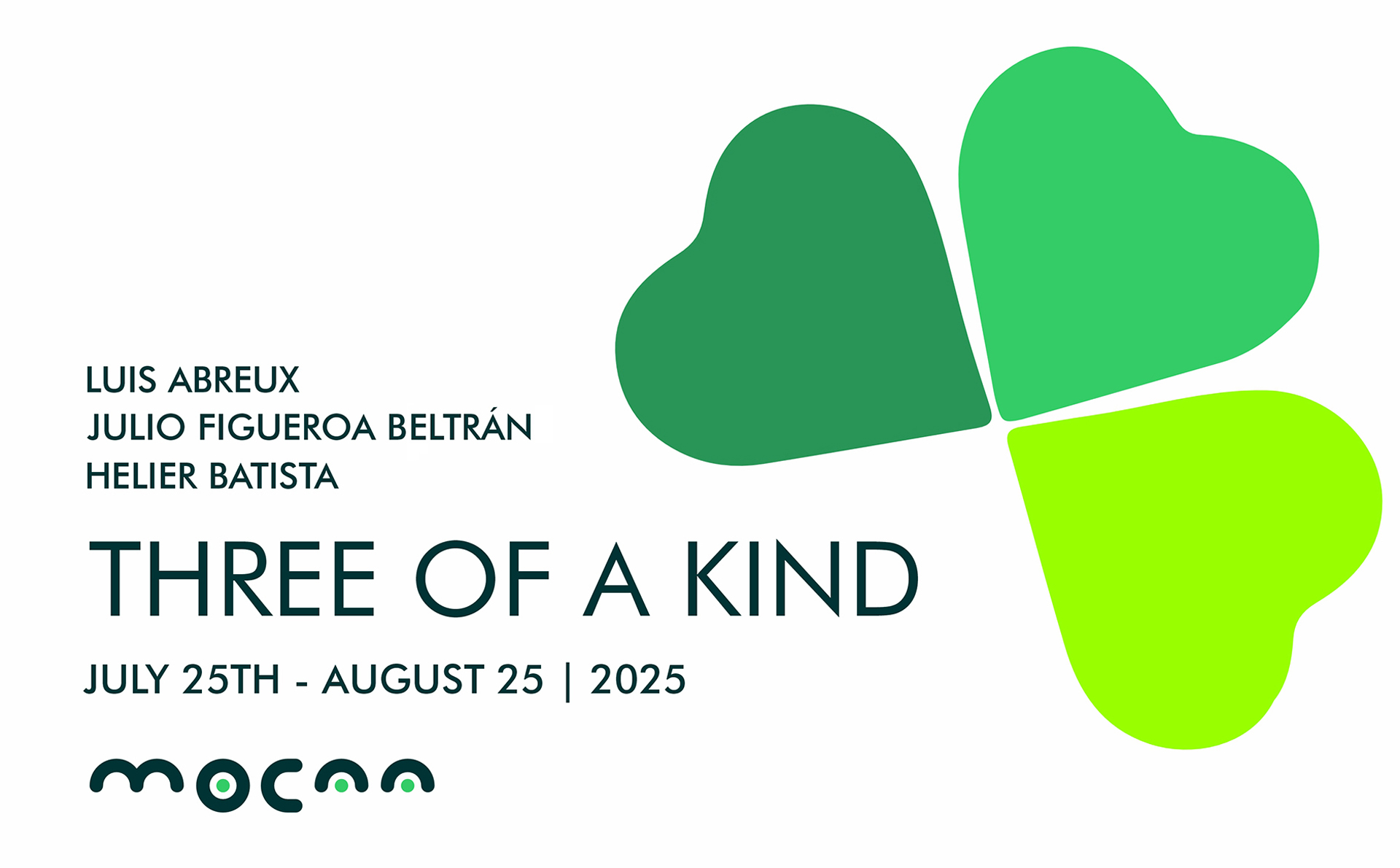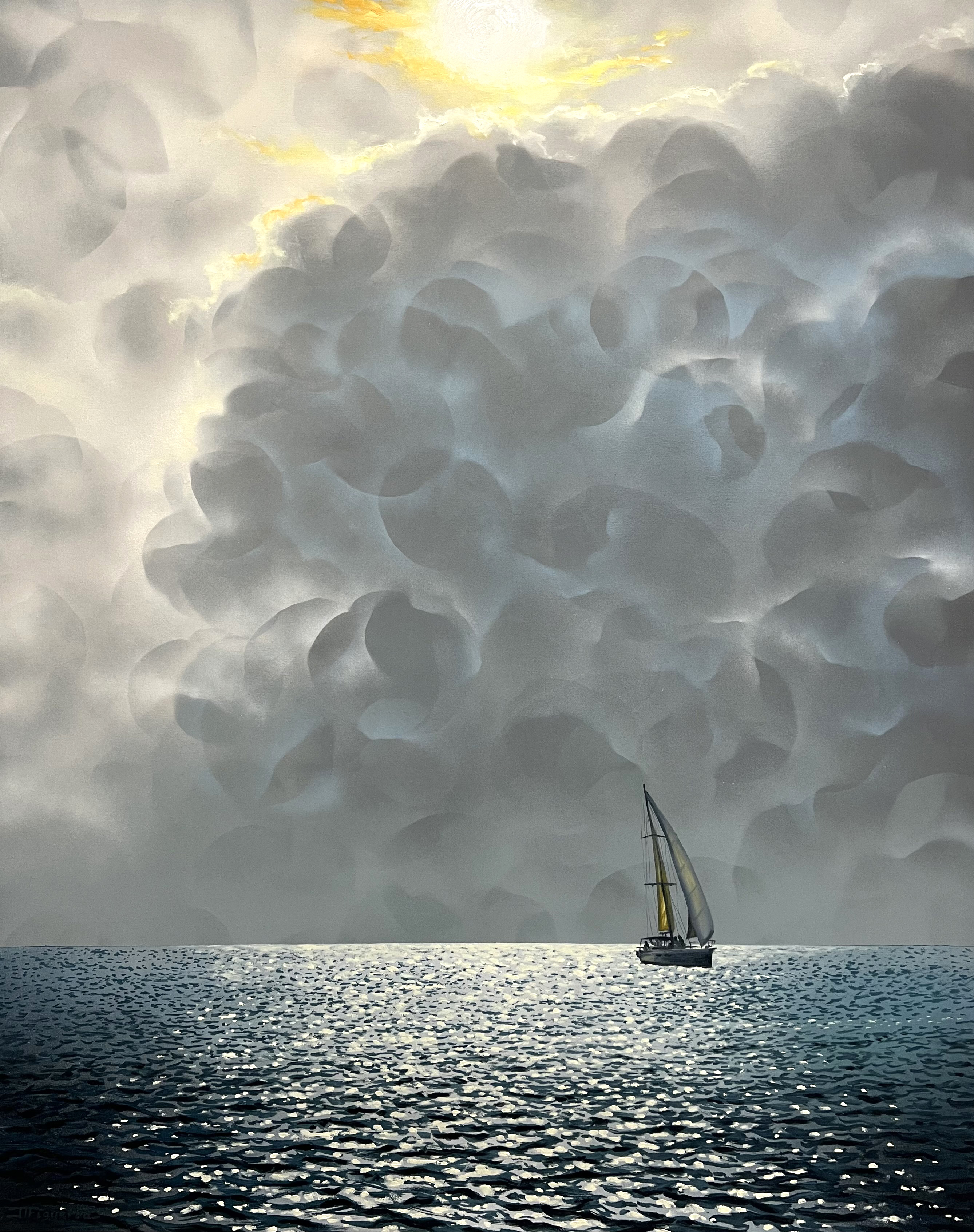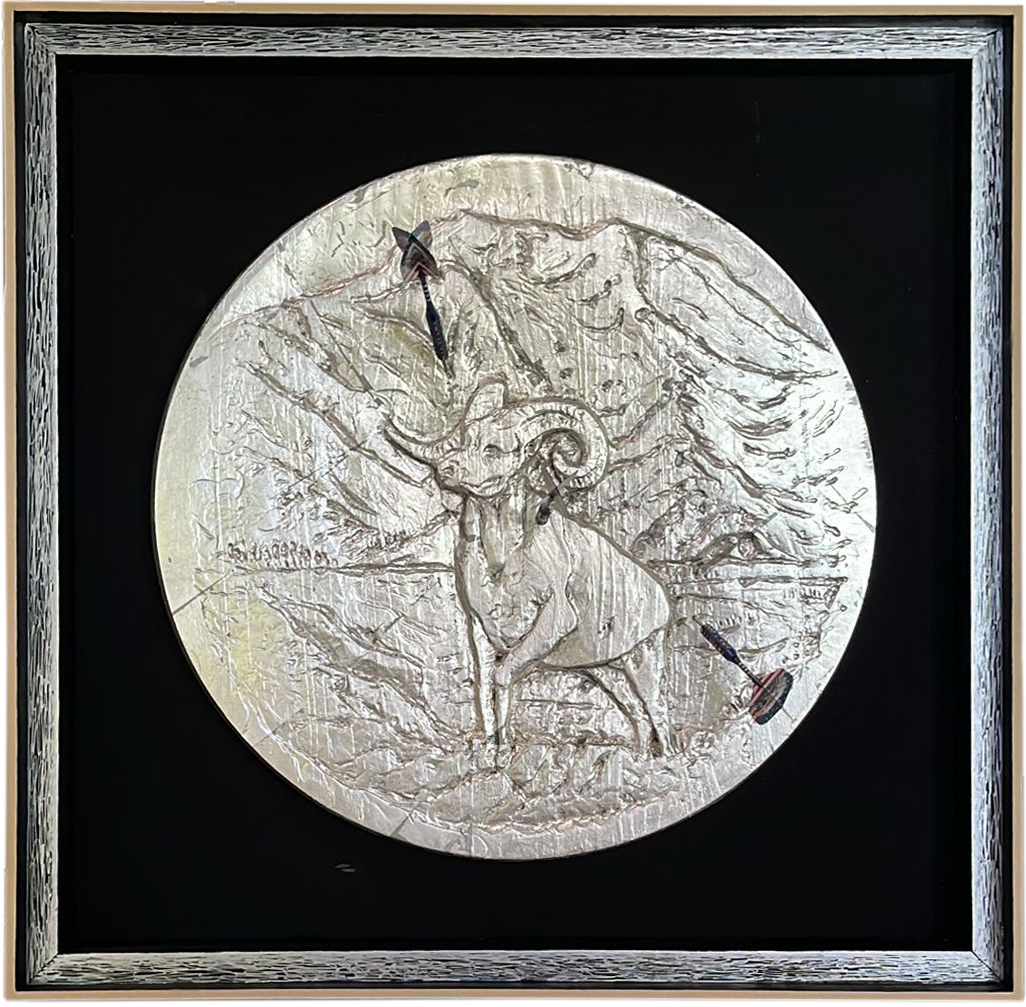
Numerous people, including family and friends, attended the opening of the exhibition "Three of a Kind," organized by the Museum of Contemporary Art of the Americas (MoCAA) in Kendall, as part of the Art in the Community program. The exhibition, which took place from July 25 to August 25, 2025, featured artists Julio Figueroa-Beltrán, Helier Batista, and Luis Abreux, and was curated by the Rodriguez Collection team.
At the center of this exhibition was a friendship—not a trivial or anecdotal bond, but one that had endured for over two decades among artists who, although not necessarily of the same generation or trajectory, had cultivated aesthetic and personal complicity. "Three of a Kind" was born precisely from that complicity. Its title—borrowed from a poker hand where three different cards share the same value—served as a structural metaphor to present three distinct voices, each with markedly different visual languages, yet rooted in a common cultural substratum and a willingness to engage in dialogue based on mutual respect and difference.

The exhibition did not seek to force a synthesis or build a closed narrative. Instead, it proposed an open architecture where each work retained its autonomy while gained depth through proximity to the others. There were no hierarchies or zones defined as an artist’s "exclusive territory": the three shared the exhibition space in a curatorial gesture that highlighted crossings, frictions, and potential resonances among divergent imaginaries.
What initially seemed a private gesture—reuniting after years, showing what each had been thinking, living, and painting—became an act of collective responsibility. The exhibition marked not only an emotional reunion but also a restitution of meaning, demonstrating how art could articulate memories, migrations, bonds, and fractures on a single surface. In this sense, Three of a Kind was significant not only for the artists involved but also for the institution that hosted it and the broader artistic and cultural community.
Presenting it in this space, with which the three artists had previously been associated, felt like a return home, albeit transformed, tempered by maturity and an awareness of time's passage. In this maturity, the exhibition found its tone—not as a nostalgic celebration but as an affirmation of what remained possible: encounter, shared creation, and meaning constructed through diversity.

Julio Figueroa-Beltrán’s —the image above— work stood out for its contemplative and narrative qualities. His paintings arose from everyday life in the United States—a father and son kayaking in the Gulf, Florida palms at dusk, Victorian houses in the South—yet did not remain anecdotal. His imagery operated with symbolic layers transcending the visible. His landscapes featured a deliberate misalignment, a subtle fracture in representational logic that transformed them into dreamlike territories, close to surrealism yet never fully embracing it. They were possible worlds rather than real ones, emotional rather than geographic settings. Figueroa-Beltrán painted as one mapping an inner drift: a cartography of exile, memory, and nostalgia.

Helier Batista —the image above— worked through the critical appropriation of American visual icons. His "American Landscape" series drew from an apparently familiar pictorial tradition—flags, buffalo, coins—but was displaced and rearticulated through the gaze of an immigrant who turned that symbolic repertoire into a field of inquiry. His gesture was neither merely ironic nor parodic but a way of reconfiguring identity in transit. Batista did not copy the American landscape; he decoded it, rewriting rather than simply representing it.

Luis Abreux —the image above— positioned himself in a more expressive and gestural realm. His painting—rich in materiality, with thick impasto and oil—created a link between drawing and painting reminiscent of certain neo-expressionist impulses. His line also contained something playful, an irreverent irony linking him to the tradition of graphic humor and visual satire. His compositions were direct, sometimes raw, and intensely physical. In this exhibition, he presented a series dominated by white, where spontaneous strokes opened to intuition and the visceral without losing structure.
Formally, the exhibition unfolded as an open constellation, without exclusive zones for each artist but rather a weaving that allowed intersections, subtle interferences, and unexpected echoes. Visual quality and coherence of the whole took precedence over the logic of distribution. Larger works occupied the shared ground floor, while smaller pieces inhabited the upper level, amplifying dialogue and highlighting affinities and tensions among the works.
What occurred in "Three of a Kind" was not simply a group show but a conversation. A conversation among three friends who chose art as their way of life and thought, opened to the viewer, inviting them to enter that complicity, to read between layers of color and symbol, and visually reconstruct the life trajectories traversed by each canvas.



This exhibition is made possible thanks to the support of the Miami-Dade County Department of Cultural Affairs, the Cultural Affairs Council, the Mayor, the Miami-Dade County Board of County Commissioners and Rodriguez Collection




The Kendall Art Cultural Center (KACC), dedicated the past six years to the preservation and promotion of contemporary art and artists, and to the exchange of art and ideas throughout Miami and South Florida, as well as abroad. Through an energetic calendar of exhibitions, programs, and its collections, KACC provides an international platform for the work of established and emerging artists, advancing public appreciation and understanding of contemporary art.
READ MORE
The Rodríguez collection is a blueprint of Cuban art and its diaspora. Within the context of the new MoCA-Americas the collection becomes an invaluable visual source for Diaspora identity. It represents a different approach to art history to try to better understand where we come from to better know where we are heading.
READ MORE




